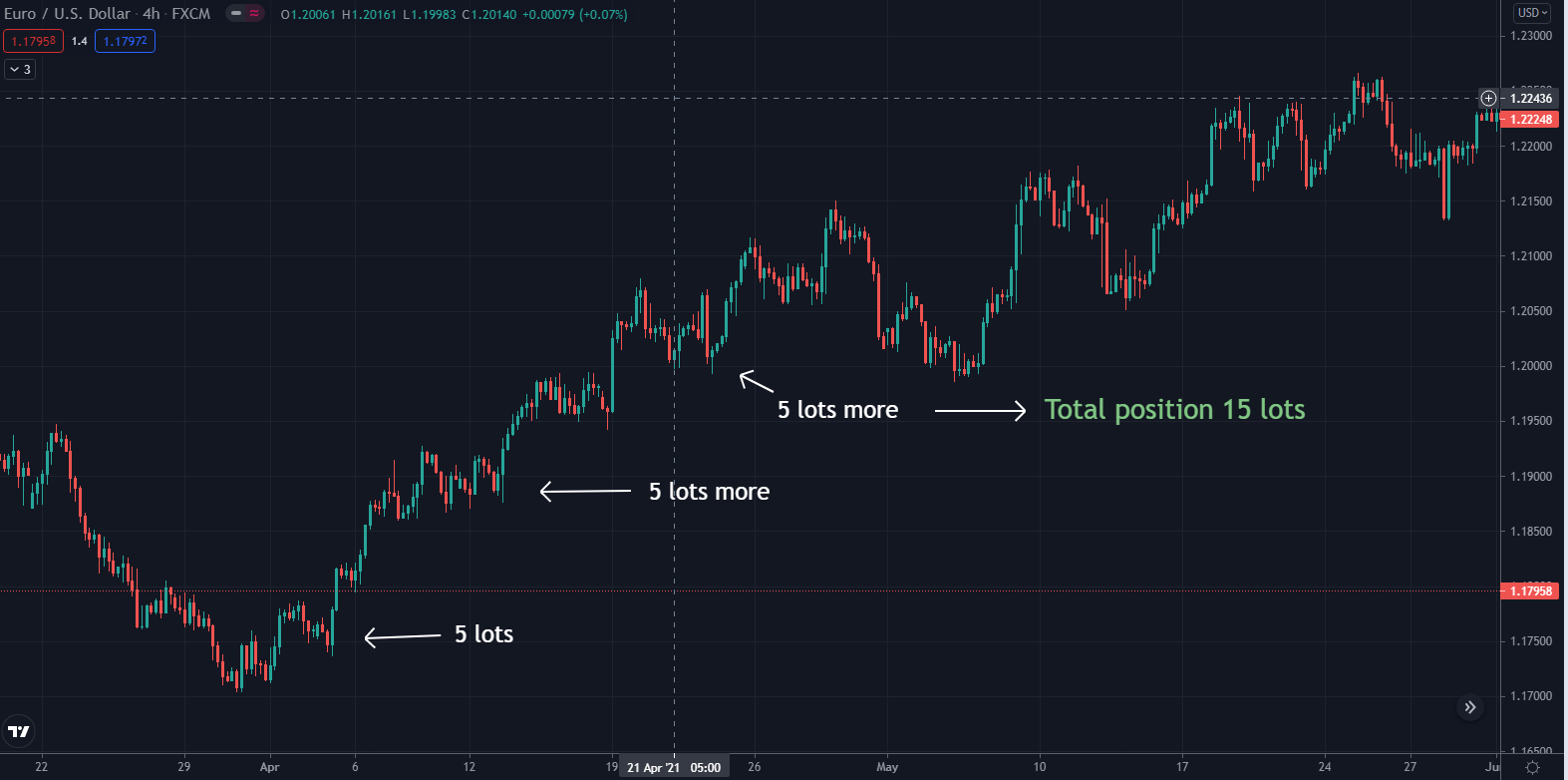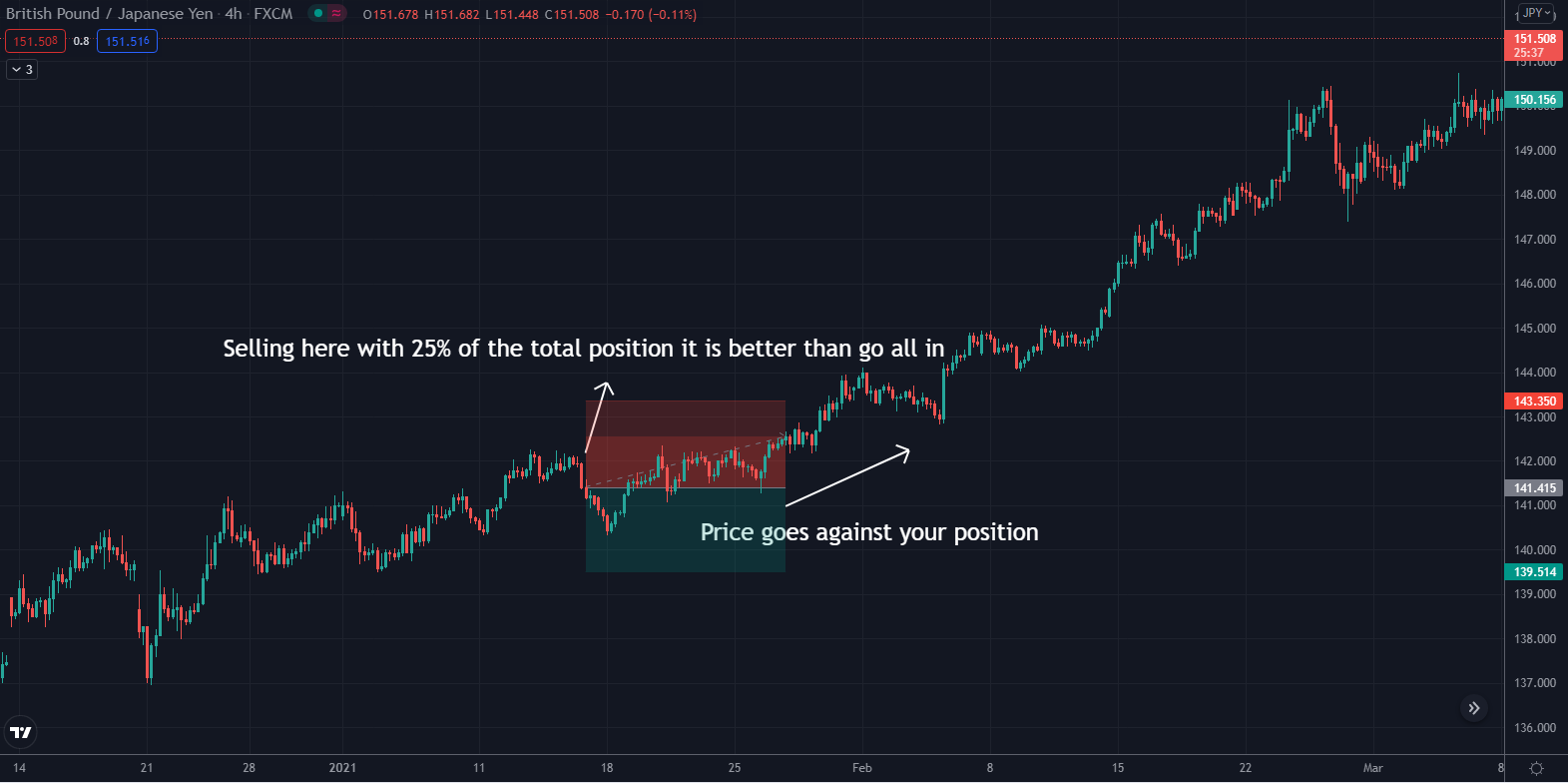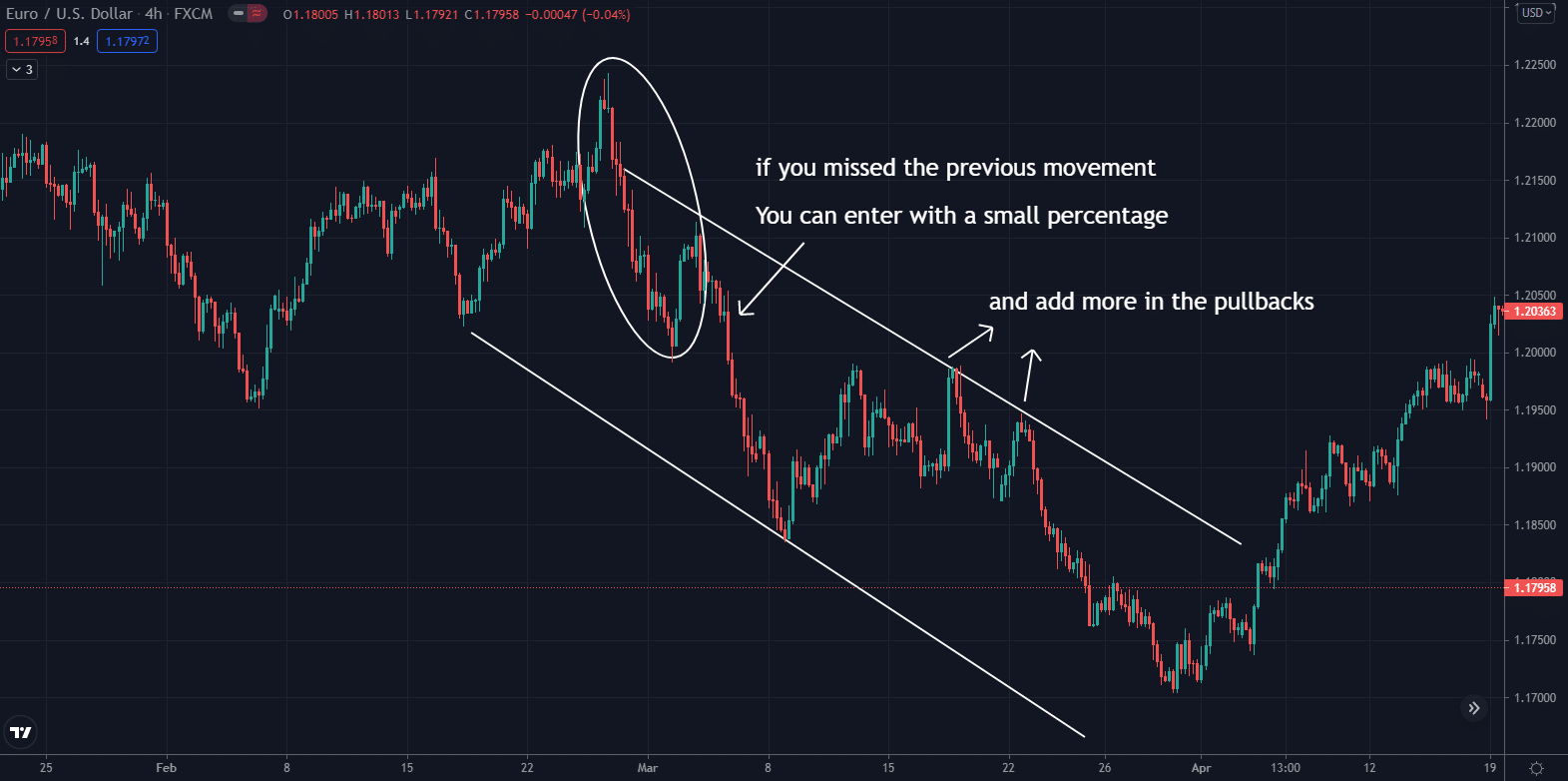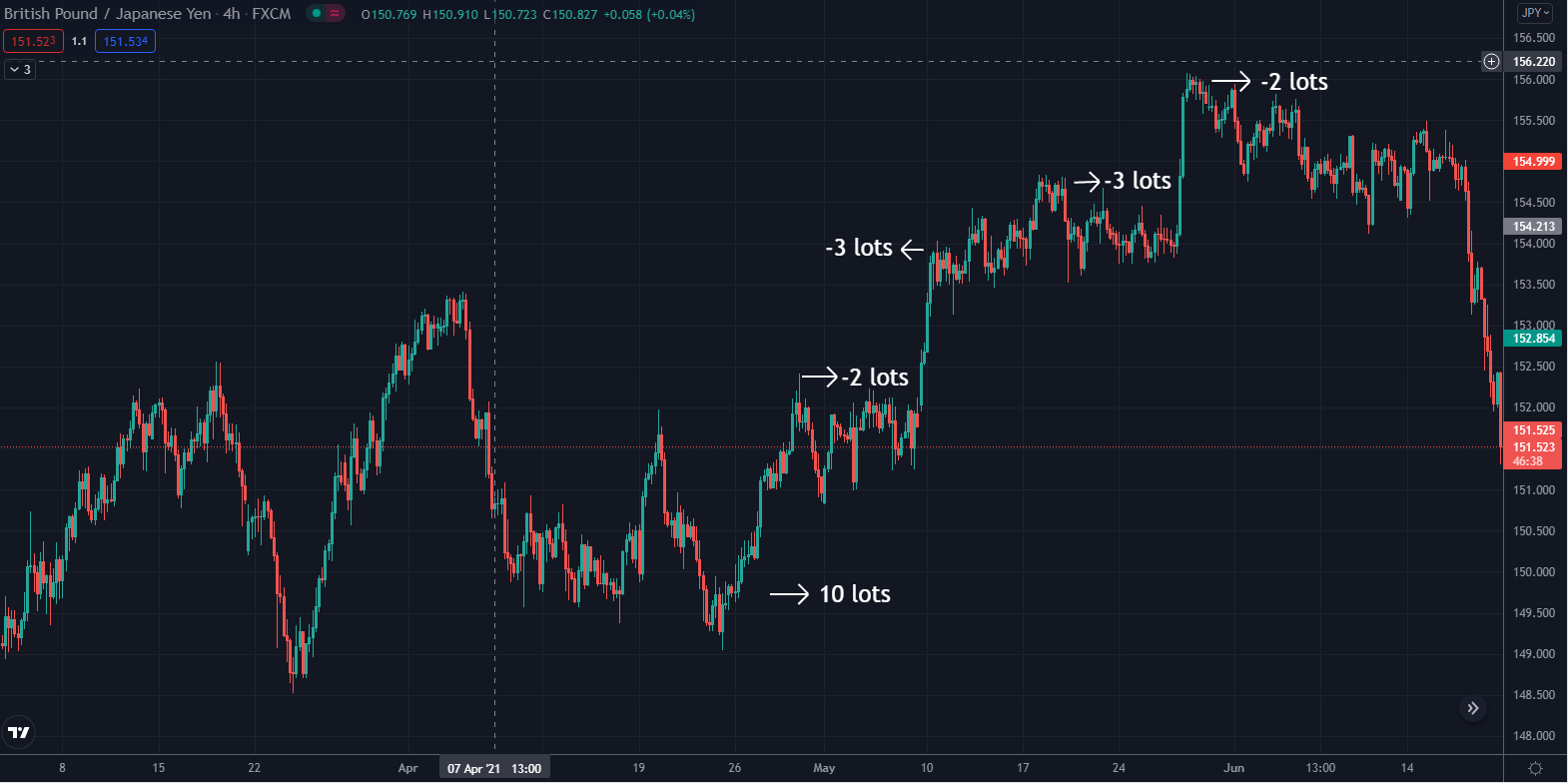All amateur or professional traders must have a series of tools that maximize their profits and reduce the risk of significant losses in operations. However, making money in the markets is not an easy task. That is why it is essential to focus on not losing capital from the beginning.
Sometimes, it isn’t easy to know when it is time to enter the market. Still, often it is more complex to understand when to exit or when to add/reduce the position size. The trade often moves in your favor, and if you’re not taking profits, soon you may realize that the position isn’t positive anymore. So, in the end, you close the position losing money. Have you ever experienced that?
There is no doubt that proper money management is the basis of successful trading. If we cannot define the management of our positions, we will probably end up losing capital.
There are two well-known and straightforward strategies to intelligently manage money from positions when investing in the financial markets. Scaling in and scaling out are widely used in the trading world. This article will focus on the differences, advantages, and disadvantages and how to use them practically to manage trades.
Scaling in
Adding size to the position as the price moves in your favor in an uptrend or downtrend is the way this strategy works. For example, if you want to open a 15 lot position in the EURUSD pair, you can start with five lots. Then, if the price moves in your favor, add five more lots, and so on until you reach 15 lots.
Let’s see how it works in the chart below.

An important thing to keep in mind is that the ideal points to add money are pullbacks or continuation patterns in a trend.
Advantages of scaling in
- Reduce the total risk: there will always be a risk of loss, but the advantage of scaling in is that you will only commit a part of your capital at the beginning. If the price goes against you in the first entry and touches your stop loss, you will lose less money than if you invested all your capital since the beginning.

If the price goes against you in the first entry and touches your stop loss, you will lose less money than if you invested all your capital since the beginning.
- Get better entry prices: You often analyze an asset correctly, but probably by the time you decide to enter, the price has already moved where you predicted.

Scaling in will allow you to manage this situation better and thus not put all your money at an overextended point of the trend.
Disadvantages of scaling In
- Potential to lose good profits: since the operation involves adding money to the position as the price moves, our entry price will change, which is a disadvantage. If the price starts to move opposite to our targets, the losses can become more significant.
Additional advice when using scaling in
Make sure you don’t end up risking too much money on a position. For example, if you allocate 3% of your balance to each trade, do not increase beyond that. Instead, plan your entries by defining three entries and adding 1% of your balance to each entry to keep your risk under control.
Scaling out
Taking profits as the price moves in our favor is the way this strategy works. It is the opposite of scaling in. This means that we are locking in profits and reducing our exposure to downside risk.
For example, if we open a 10-lot trade on the GBPJPY pair and the price moves in our favor, we close two lots and lock in part of our profits.

Then if the price is still in our turn, we close three more lots and so on until we cover the ten lots. Let’s look at it in the chart above.
Advantages of scaling out
- Generate profits faster: By the nature of this strategy, it allows you to secure profits as the price moves in your favor. This will give you more peace of mind if the price starts to go against you because you are trailing stop loss.
Disadvantages of scaling out
- Smaller profit range: a notable disadvantage is that the profit percentage will be smaller as you reduce your position and the price continues to move in your favor. For example, if you enter with $1000 and the price moves 1% in your favor, and you cash in $500, the profit you generate if the price continues to advance in your favor will be less because there is less money invested.
Additional recommendations when scaling out
Suppose you have a position that has reached its profit target, but you believe additional returns are possible. In that case, you can continue scaling out to let the profits run. It is advisable to take percentage gains from highest to lowest, e.g., 50-25-25%.
Conclusion
As you have seen throughout this article, both scaling in and scaling out are some of the best money management strategies available for trading the markets.
As for scaling in, we can say that it is the riskier option of the two, as you can maximize profits. Still, it can also be dangerous due to the potential for loss, especially in more volatile currency pairs.
As for scaling out, it is the most recommended way for beginners to generate profits. However, many traders question this form of money management because if you invest large amounts and the trade goes wrong, you would be maximizing losses.
But, if the trade goes well, you will be able to maximize profits from your trading idea.
Trying both strategies or selecting one of them according to your risk profile is recommended. Whatever the case, the most important thing is that you are confident that the strategy you use is helping you to manage your risk effectively.
